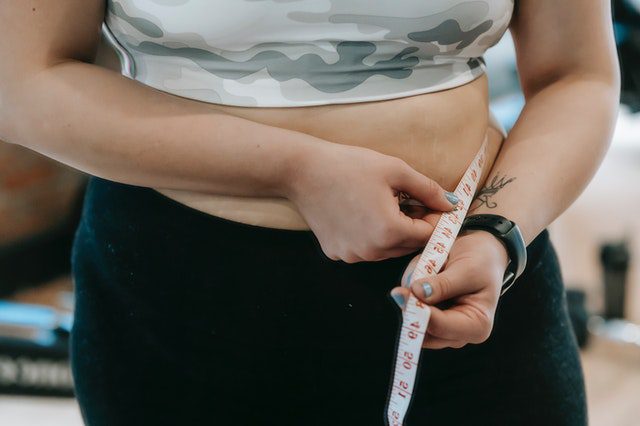
Conventional Liposuction vs Hi-Def Liposuction
When it comes to body contouring, high definition liposuction has been a whole new horizon; this is because it would allow a surgeon to sculpt the body more precisely than has been possible before.
Both of these procedures are relatively safe and can achieve great results, even on stubborn pockets. However, high-definition liposuction obviously involves greater visual effects. Traditional liposuction involves mostly reducing the volume, whereas high definition liposuction involves more sculpting and greater detail.
High-definition liposuction is only truly effective in individuals who are otherwise fit and living a healthy lifestyle that does not have large amounts of fat to remove. Most surgeons who perform high-definition liposuction use a machine called a Vaser, which uses ultrasonic energy to achieve their results.
Before we discuss transgender-specific procedures, we will look at different types of liposuction. In reality, the transgender-specific procedure almost does not differ from the traditional procedure at all. The only difference lies in how fat distribution is changed. So, let us take a look at all the different types before we look at this small difference.

Tumescent Liposuction
This involves the use of a solution called tumescent fluid. The composition allows for pain management construction of micro-vessels to minimize blood loss and makes fat cells more viable for fat transfer procedures. This process involves steps where a surgeon injects a tumescent solution while you're having fat removed.
Traditional Liposuction (Wet Technique)
This is usually a tumescent liposuction procedure where the fatty tissue layers are removed and replaced with the tumescent solution. This technique aids in maintaining fluid dynamics within the patient's body, thus helping to maintain homeostasis. This procedure requires general anesthesia, which is a known limitation of the procedure. It also can only be done on deep fat tissue.
Traditional Liposuction (Super Wet Technique)
This technique uses much more of the tumescent fluid, the ratio being 100cc to 1cc. This means that general anesthesia is not required, and patients can be awake during the surgical procedure. It is always better not to place patients under general anesthesia if at all possible, as anesthesia has risks of its own. The downside of this procedure means that large volumes of Liposuction cannot be attempted due to the large amount of tumescent solution that is pumped into the body.
Laser-Assisted Liposuction
This type of liposuction involves using a laser beam to melt fat cells, thus assisting in more comprehensive removal of fat. The procedure has two steps. First, laser probes are used to send laser energy straight to the cells; then, a cannula is used to remove fat that has been melted.
Thinner cannulas are commonly used for laser lipo because there the fat has been melted, and there is much less damage to nerves and blood vessels. However, this procedure is not suitable for fat transfer because it kills the cells. While more fat can be removed than in traditional liposuction, less is removed than in ultrasound-assisted liposuction.
Power-Assisted Liposuction
This type of liposuction procedure is similar to laser-assisted liposuction, but instead of a laser, it uses vibrating cannula tips to remove fat. This makes the fat removal process faster and allows the surgeon more precision, and it does not kill the cells.
Ultrasonic Assisted Liposuction
UAL is one of the most advanced liposuction techniques. It uses ultrasound energy to liquify semisolid clusters of fat. While this procedure is great for fat reduction, it can also be used for fat redistribution when the ultrasonic cavitation is used with liposuction, as it does not kill the fat cells.

Vaser Liposuction
A process called cavitation is used to break up cell clusters into single cells. Rods are used to create tiny air bubbles in the superficial and subdermal layers of tissue. This means that cells can be siphoned off instead of ripped out, as in traditional procedures.
Vaser liposuction involves the use of a special Vaser machine, and the first introduction of Vaser-assisted liposuction was a more than adequate technological solution to some of the precision problems experienced within the society of plastic surgeons working with traditional liposuction techniques.
The main advantage here is that 60% more fat can be removed from superficial and deep layers of tissue. The superficial layer of fat can also be targeted, unlike with traditional liposuction. These fat cells are also much better suited to fat grafting.
Who can get hi-def lipo?
An ideal candidate for a liposuction procedure is an adult with a BMI of 28 or lower. It is best to note that liposuction is not ideal for major weight loss but is suitable for someone very close to their ideal weight.
The other circumstance that affects your suitability for a liposuction procedure is the elasticity of the skin. If your skin is not elastic enough, then you might end up with saggy skin. This means that factors related to the aging process are considered when a patient requests this kind of procedure. If you do not have good skin elasticity the, you might end up with excess skin over time which might require dermatologic surgery later down the line.
Advantages of High definition liposuction
What you should ultimately be looking out for in choosing a liposuction procedure is one that has as few limitations as possible in attaining your ultimate goal, which might not be related to removing fat at all but rather to redistribute it. Especially in the case of transgender patients, fat removal is not the goal of procedures like tumescent liposuction. They realize that a certain profile significantly reduces distractions from the attributes of their preferred gender. They want to emphasize essential elements of their body that corresponds with their gender identity. So while a surgeon still remove fat, they will use it to resculpt other areas of the body, which is where hi-def liposuction comes in.

Improved Body Contouring Results
Traditional liposuction removes fat quite effectively, but high-definition liposuction aids body sculpting by making fat removal gentler. The ultrasound that is used to achieve this helps to tighten the skin and create a more toned and lean look with better skin results over time.
Faster Recovery Time
Traditional liposuction procedures have a significantly longer recovery period. With high-def procedures, there is much less bruising and only a small incision which means you can return to your normal daily life much sooner.
Office work can be resumed within four to seven days following the procedure, but more manual work and even strenuous workouts can only be resumed at a minimum of four weeks after surgery. If it causes pain, you should avoid the activity until such a time that you no longer experience pain when attempting it.
Liposuction is an outpatient procedure; therefore, you can leave the hospital on the same day as the procedure, but with traditional liposuction, you might need about 24 hours of inpatient care because the procedure is considered more invasive.
Lower Risk of Complication
A smaller incision means less chance of infection and easier healing. Dissolvable stitches are used, so a visit to your plastic surgeons just for the removal of stitches is not required. There is also no need for general anesthetic, which also reduces the risk of adverse reactions to it.
Can be Used Anywhere On the Body
Because it is more gentle, it can used on more sensitive areas. The fat that is removed with hi-def liposuction can be used for body contouring. Furthermore, skin tightening benefits are greater due to the ultrasonic device used, so additional skin procedures are not needed.
How Long Does The Procedure Take?
The amount of time taken to complete the procedure depends on the amount of fat that you want removed. While you will be awake for the procedure, there is no pain due to the tumescent liquid, which also reduces both bruising and bleeding. Furthermore, since this is an outpatient procedure, you are not required to stay in the plastic surgery office or hospital overnight.
When Can I Expect Results?
There will be an immediately noticeable change in the shape of your body. Further changes will continue to settle up until a year after the procedure. These changes will include tightening of the skin and increase in muscle definition. At 12-month post, op results will be at their peak.
Are the Results Permanent?
Fat removal from hi-def liposuction is permanent because the fat cells are removed and do not grow back. This does not negate the need for diet and exercise, though, as people who live a healthy lifestyle enjoy longer results and better appearances following treatment. Areas of the body that were not treated will gain weight normally.
Skin tightness is not permanent. It will begin to fade after the first year following the procedure. To reduce the effect of this, you need to avoid the sun and keep a healthy skin routine. You might need a skin tightening treatment at some point down the line.
If you maintain a healthy diet and exercise routine, then weight gain will not be a concern, but it is important not to neglect this because you believe you cannot gain weight after this procedure. Areas of the body treated with liposuction can still gain weight, and other areas that were not treated will certainly respond normally to overeating and lack of exercise.
Preparing for a Liposuction Procedure
One of the first steps in the preparation for this kind of procedure will require a consultation with a plastic surgeon. During this consultation your goals will be discussed, and expectations will be managed. It is important that you understand the extent of results that are possible.
The surgeon will take a detailed medical history. It is essential that you are open and honest about your history so that the surgeon understands all the risks involved in your personal case and can prepare accordingly. You will be required to confirm that you have made arrangements for how to get home safely following the procedure and that there will be someone to help you around the house for the first few days following the procedure, especially the first two days.
It is important to maintain a balanced and healthy diet leading up to your procedure. Do some light exercise and get plenty of rest. You can have a light meal early evening before your surgery but should stay away from alcohol and cigarettes. When you go to the plastic surgery office, leave your jewelry and piercings at home and wear comfortable clothing (a button-up or zip-up shirt is best).
Following the Liposuction Procedure
You should expect that there might be a need for drains following your surgery or even a lymphatic drainage massage to help remove any waste fat cells from your body. Someone will need to drive you home as you will not be able to drive yourself. It could also be helpful to have someone who can help you for the first two days after surgery. While this will be very helpful and can be great for your recovery, it is not a hard and fast rule as it might be for some other procedures. You should stick to light meals and a lot of rest. You might be able to do office work within a week but should avoid strenuous work for at least four weeks.
Furthermore, for the first four weeks after the surgery, you will need to wear a special compression garment. You will also attend follow-up consultations at the plastic surgery office the first and second week after surgery. Then again at around five weeks and six to 12-months later again. Exposure to the sun should be avoided for at least three months after the procedure.
Transgender Specific Hi-Def Liposuction
The most often used target liposuction for gender affirmation is trunk liposuction. It is more common for transfeminine individuals as testosterone treatment usually has satisfactory fat redistribution results for transmasculine people. Overall, however, fat redistribution serves a significant role in gender reaffirmation.
There is no real age restriction on this procedure for transgender individuals, and the decision will largely depend on the firmness and elasticity of your skin. Good health, both mentally and physically, is important for this kind of procedure, and you should also be of reasonable weight. The purpose of hi-def liposuction for a transgender person is not weight loss but rather redistribution of fat. It will also be beneficial to be a non-smoker or to have quit before surgery. Smoking greatly increases the risk of blood flow and blood pressure issues. Another very important thing is that your expectation should be realistic. A detailed consultation with the surgeon will help to manage expectations.
Overall, your procedure as a transgender individual will be practically the same as what anyone else has. The steps taken during surgery are the same, but your ultimately visual goal might be slightly different. This, however, does not really change the steps or experience of the surgery.
What Complications Can I Expect?
While complications to a procedure like liposuction are rare, there are still some risks involved. Fluid accumulation is a normal complication that your surgeon will attempt to avoid through placing drains and performing a special massage to stimulate your lymphatic system to help get rid of excess fluids.
There should only be minimal bruising with hi-def liposuction, so if you notice excessing bruising in surrounding tissue, then you should contact your doctor as it might be a hematoma or something more sinister. The kind of liposuction procedure that is best suited to the needs of a transgender individual will involve a procedure where the surgeon inserts a thin tube into the cells to help liquefy fat. This makes fat redistribution easier and actually lessens the risk of complication.
Patients who are on blood thinners might have an increased risk of bleeding, and patients who smoke might have an increased risk of clotting. A rare and devastating complication is a fat embolism which often results in death or disability. There might also be contour irregularities for a number of reasons which might require additional surgeries, although wearing a compression garment as instructed should minimize this risk as well. Patients with a weak immune system should closely discuss their surgery options with a plastic surgeon. Some of the usual risks experienced in the procedure to remove fat and redistribute it might increase if you have a weakened immune system.



